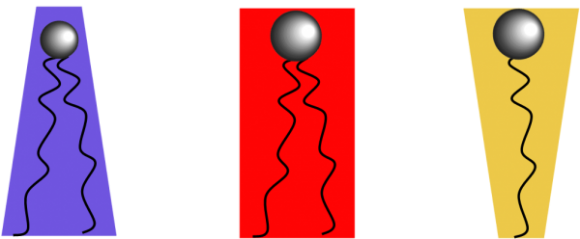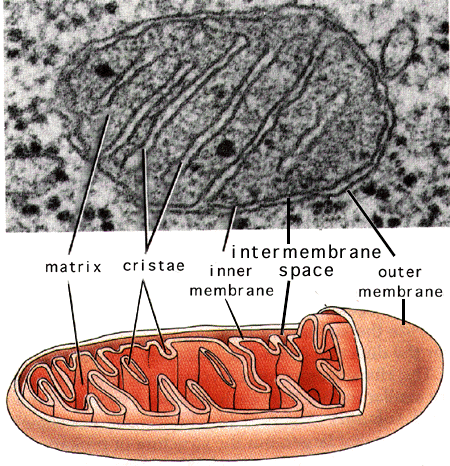Curvy Biology
There is no such thing as a straight line in nature. This is especially obvious in cells and in their membranes. The absence of straightness from biological systems, including that of bilayers, presents a problem for membrane biophysicists and lipid chemists. Although the principles governing the way the lipid molecules used by cells to make membranes are well understood for flat bilayers, the presence of curvature provides an additional dimension to what we see. However, as with a lot of science, it gets a little bit more complicated before it gets simpler.

Figure 1. Curvature in membranes. (a) Prostate cancer cell, taken by Robyn Schlicher of Georgia Institute of Technology, showing normal curvature of all membranes; (b) A bilayer of phosphatidylcholine, showing that this lipid cannot form a curved surface as this would require vacuums in between the lipids; (c) The inclusion of cone-shaped lipids into a PC bilayer allows the layers to produce a curved surface without a vacuum.

Figure 2. Curvature in membranes arises through lipids of differing shapes. Left is the type II phosphatidylethanolamine, that gives rise to negative curvature. In the middle is the type 0, cylindrical, phosphatidylcholine that does not induce any curvature. On the right is lyso-phosphatidylcholine that brings about positive curvature in membranes.
The bilayer of lipids that makes up the plasma membrane is constructed of two mono-layers that face in opposing directions. Thus in order for the bilayer to bend, the mono-layers must bend in opposite directions in order that the bilayer bends as one entity and does not form a vacuum in between the mono-layers (Figure 1a). Mathematicians will say immediately that this means the leaf on the inside of the bend* has a smaller surface area. So, with a smaller surface area, why does the cell not have fewer lipids on the inside than on the outside? The answer is that it does, but that this is not enough to bring about curvature on its own, as there would still be gaps (Figure 1b). This problem is solved by the cell having lipids that are of different shapes (Figure 1c).
We are familiar with lipids that produce flat bilayers, such as the phosphatidylcholines, including Dioleoylphosphatidylcholine (DOPC). These are called type 0 lipids. There are also type I lipids, and type II lipids (Figure 2). Type I lipids include a modified form of DOPC, in which one of the fatty acid residues has been removed. This is known as lyso-PC. This is type I rather than type 0 because the choline head group is larger than the greasy hydrocarbon fraction, and so the lipid forms a cone shape. This cone shape means the lipid’s presence in a bilayer encourages positive curvature – curvature away from the water. This is useful to the spheroid cell, as the outside of its membrane can curve away from the water. This is complimented by type II lipids, in which the fatty acid part of the lipid molecule is wider than the head group. As we cannot bolt another fatty acid residue onto PC to make it type II, we can instead modify the head group to make it smaller. This gives rise to an entirely different type of lipid, called phosphatidylethanolamine.
So, with just these three lipids, we can bend a lipid monolayer in either direction. If they were arranged around something, they could even form a textured, or curvy, surface. Mitochondria, the powerhouses of the cell, need a large membrane inside as this is the surface required for many of their chemical reactions to take place. This inner membrane requires the presence of all three of these types of lipid in order to bend into flaps to give itself this large surface area (Figure 3). This, however, is not the full story. Although further work has been done, exactly how the membrane changes and its dynamic nature through processes such as cell division are not yet fully understood.

Figure 3. Curvature in membranes in the mitochondrion; , shown in both an electron micrograph, and a drawn diagram. Image from Brooklyn College City University of New York
Notes
* In in a cellular system, bending towards the water is known conventionally as negative curvature.